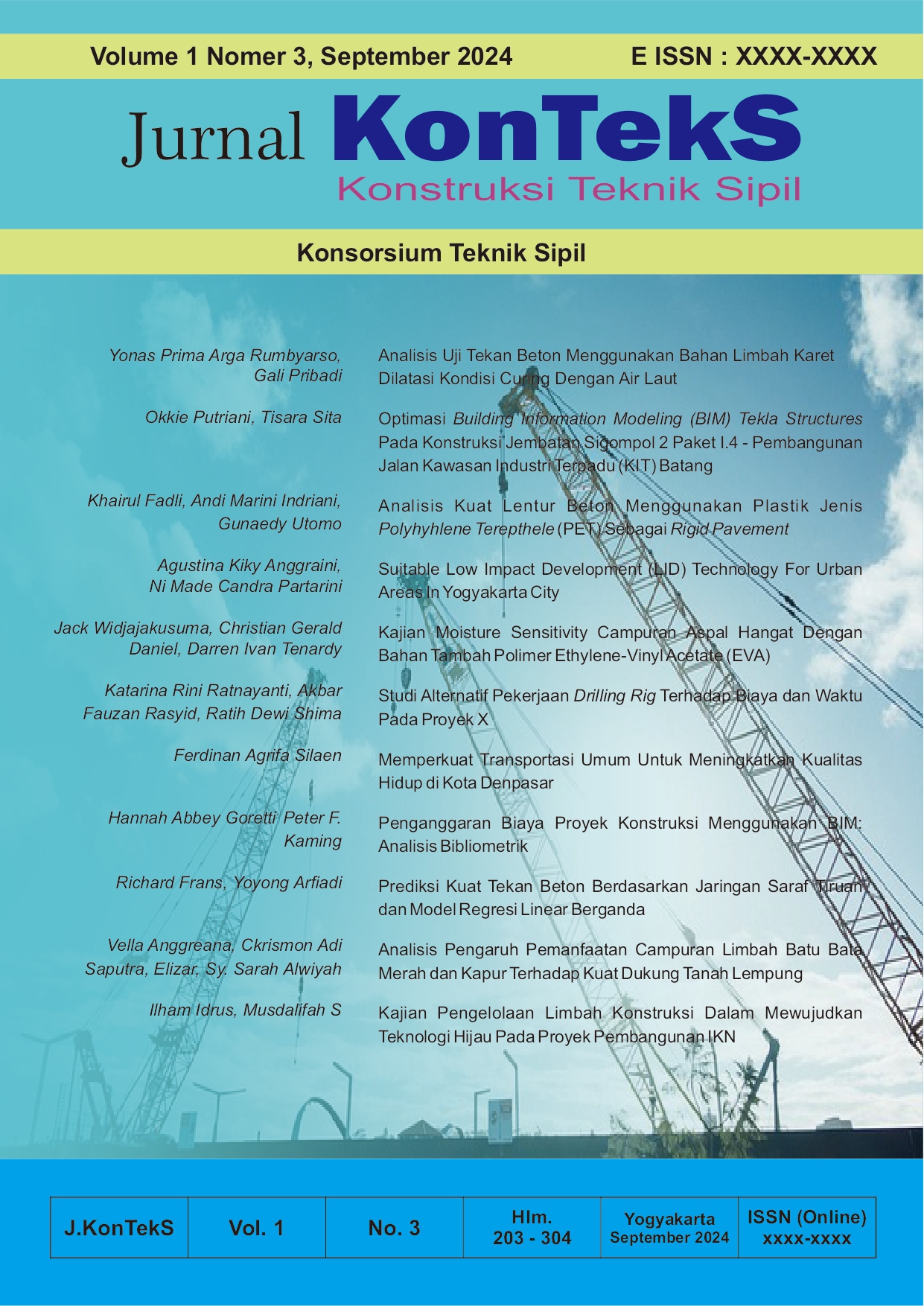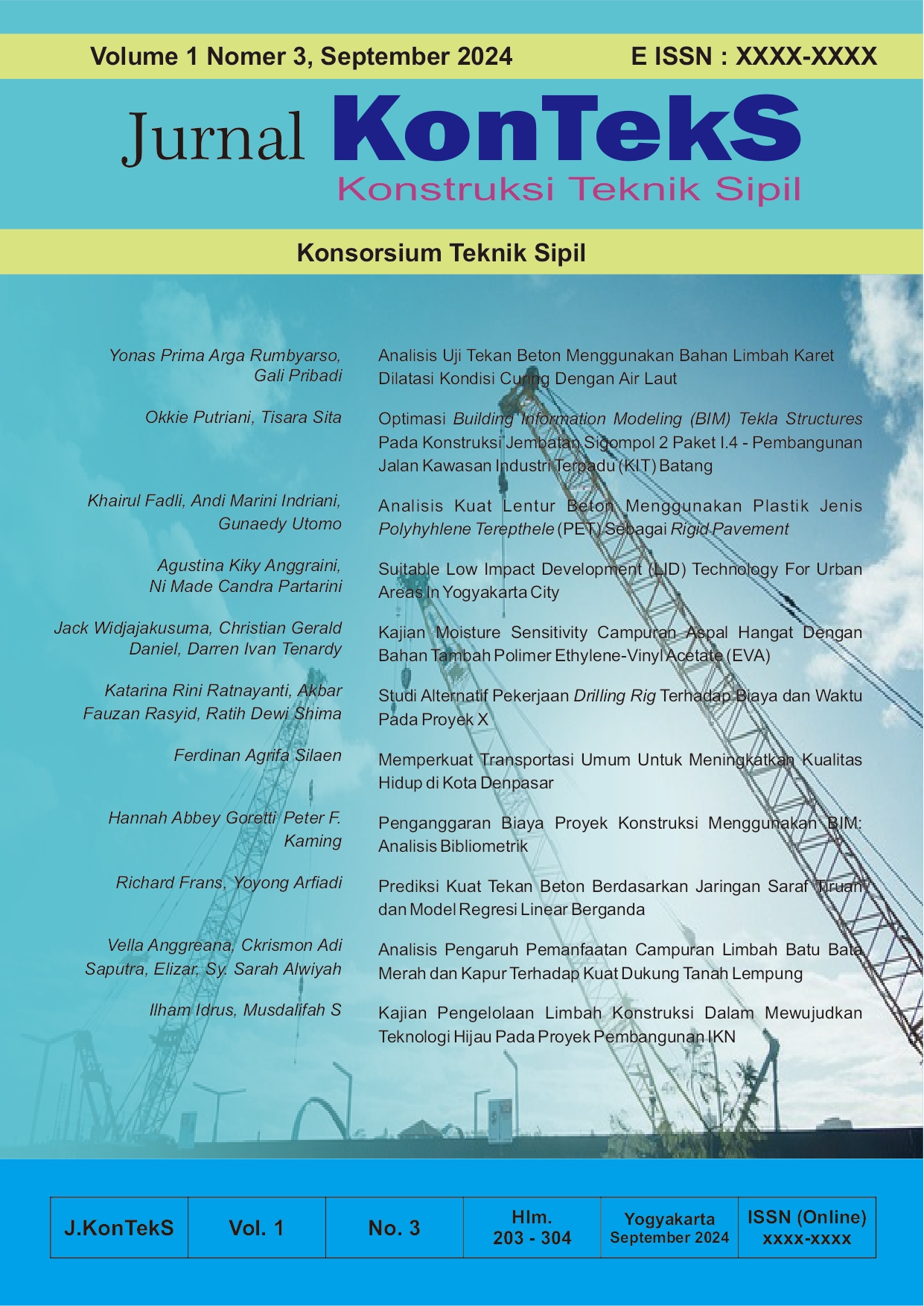SUITABLE LOW IMPACT DEVELOPMENT (LID) TECHNOLOGY FOR URBAN AREAS IN YOGYAKARTA CITY
DOI:
https://doi.org/10.24002/jkts.v1i3.10087Kata Kunci:
infiltration-based technology, storage-based technology, stormwater management, suitable technologyAbstrak
The increase in urban population leads to a decrease in infiltration area. Consequently, the risk of inundation and flood escalates, especially for a densely populated area. Implementing the Low Impact Development (LID) technologies in an area can be a promising solution for the risk of inundation or flood. The success of LID technologies has been proven globally. However, implementing LID technologies in developing countries may undergo several challenges. This paper is focused on the selection of the most suitable LID technology for Yogyakarta, a city that experiences urban area expansion and escalation of inundation risk. Eight types of LID technologies, including swales, infiltration trenches, rain gardens, porous pavements, green roofs, ponds and wetlands, rainwater harvesting, and rain barrels, will be compared based on relevant evaluation criteria for developing countries. The criteria considered in this study are the capability to reduce the stormwater runoff and improve the stormwater quality, the capability to provide a low-cost system, and the level of instrumentation/O&M requirements. Rain barrel appears to be the best solution for the reduction of surface runoff and improvement of stormwater quality. The system of rain barrels is considered simple but capable of not only reducing the runoff but also improving the quality. The cost of construction and O&M is affordable.








